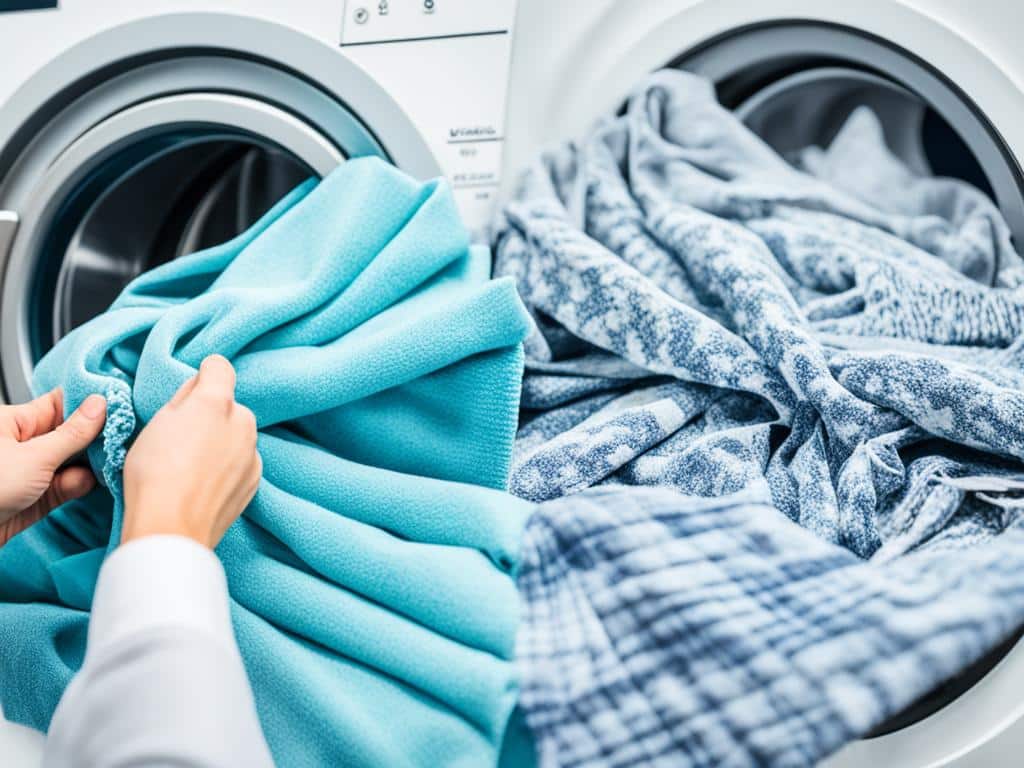
Have you ever wondered what’s truly best for your clothes—dry cleaning or traditional washing? Both methods claim to offer superior garment care, but which one actually maintains your fabrics better? Let’s dive into the details of these laundry techniques and see which one comes out on top.
When it comes to fabric maintenance, the choice between professional dry cleaning services and washing techniques isn’t always clear-cut. Each method has its own advantages and specific uses. Understanding these can make a significant difference in how well your clothes hold up over time.
To kick things off, we’ll explore the history and evolution behind these methods. This will give you a better grasp of why certain fabrics respond differently to dry cleaning versus traditional washing. Stick around, and you might just find the perfect way to keep your wardrobe fresh and lasting longer.
Understanding Dry Cleaning and Washing
Choosing between dry cleaning and washing can be tricky. Both methods have unique processes, benefits, and considerations for *clothing care*. It’s essential to understand each technique to make informed decisions.
What Is Dry Cleaning?
Dry cleaning is a *solvent cleaning* process. Instead of water, it uses chemicals like perchloroethylene to remove dirt and stains. This method is gentle on fabrics such as silk and wool, maintaining their texture and color.
Many *launderettes* offer dry cleaning as it’s highly effective for delicate garments. The process involves placing clothes in a machine that resembles a large washing machine. Instead of water, the machine uses a mix of solvents and detergents. This combination dissolves stains while being gentle on the fabric.
What Is Washing?
Washing involves using water and detergent to clean your clothes. It’s the most common *clothing care* method, suitable for everyday wear and durable fabrics like cotton. Washing can be done by machine or by hand, depending on the garment’s needs.
The process starts with dissolving detergent in water, which helps break down and remove dirt from clothes. Machine washing is convenient and fast, especially for large loads. On the other hand, hand washing is ideal for delicate items requiring extra care, making it a more hands-on approach to *wet cleaning*.
Each method has its place in your *clothing care* routine. While solvent cleaning is perfect for delicate fabrics, traditional washing is excellent for bulk clothes and rugged materials. Understanding these processes helps you choose the best approach for your wardrobe.
Benefits of Dry Cleaning
Dry cleaning offers a unique set of benefits that traditional washing often can’t match. From being gentler on fabrics to providing unmatched stain removal capabilities, let’s dive into what makes dry cleaning an excellent option for keeping your clothes in top shape.
Gentle on Fabrics
One of the standout advantages of dry cleaning is how it treats your clothes with care. Traditional washing can sometimes cause shrinkage, color fading, and even damage to delicate materials. Dry cleaning, however, uses solvents that aid in fabric preservation. This process significantly reduces the wear and tear on fabrics, maintaining their original texture and color.
Stain Removal
Dry cleaning excels in the area of professional stain removal. Unlike standard washing which might set stains deeper, dry cleaning uses specialized solvents that target stubborn spots. This method is particularly effective at removing oil-based stains that are notoriously hard to get out at home. Expert dry cleaners utilize techniques and products tailored for specific fabrics and stains, boosting your clothing longevity.
By choosing dry cleaning, your beloved items get attention from professionals who understand the nuances of fabric care. This ensures your garments are not only clean but also well-preserved over the long run.
Benefits of Washing at Home
Washing your clothes at home offers significant advantages. First off, it’s an excellent way to implement eco-friendly laundry practices. By using cold water washes and natural detergents, you minimize your carbon footprint and protect the environment. You can also make washing at home cost-effective, tailoring the process to your budget while ensuring quality clothing care.
Another benefit is the control you get over the laundering process. With DIY laundering, you decide the specifics, from laundry detergents to washing cycles. This hands-on method allows you to care for your clothes based on their unique needs.
Lastly, the satisfaction of doing it yourself shouldn’t be underestimated. Home laundering can be personalized, making it a fulfilling task. Follow best practices derived from expert laundry tips, and you’ll find that washing at home can be both efficient and rewarding.
When to Choose Dry Cleaning
Dry cleaning is often the go-to solution for specific fabrics and challenging stains. Let’s explore when it’s best to opt for this method.

Delicate Fabrics
Some fabrics require extra attention due to their delicate nature. Silk and wool cleaning is a task that professionals handle with specialized garment care techniques. Luxury fabrics such as sequins, lace, and beaded garments also benefit from professional fabric treatment, which helps maintain their integrity and avoid damage.
Stubborn Stains
When dealing with tough stains, professional fabric treatment can be more effective than home remedies. Certain chemicals used in dry cleaning penetrate deeply into the fibers, ensuring that stains from oil, grease, and other substances are thoroughly removed. This level of specialized garment care is essential for keeping your cherished pieces in top condition.
When Washing at Home Is Best
Washing at home can be a great choice for tackling your daily wear garments. It’s convenient and cost-effective, giving you control over how your clothes are cleaned. Plus, household fabric care tips can help you extend the life of your attire.
Everyday Clothing
Your everyday clothing items often consist of durable fabrics that can withstand regular washing. Clothes like T-shirts, jeans, and casual sweaters benefit from home laundering. You can save money on laundry by washing these items yourself rather than sending them out.
Cost Efficiency
One of the biggest advantages of washing at home is the cost savings. With the right techniques and products, you can keep your clothes looking their best without spending a fortune. Proper household fabric care includes using the right water temperature and detergent to preserve the quality of your garments.
Many laundry service providers suggest opting for home washing whenever possible. This advice helps in managing daily wear easily and keeps your budget in check. Consumer surveys indicate a preference for home laundering due to its practicality and savings.
Is Dry Cleaning Better Than Washing
When it comes to optimal clothing maintenance, you must weigh the advantages and downsides of both methods. Professional opinions from textile conservators often favor dry cleaning for delicate fabrics. However, washing at home offers a cost-effective way to handle daily wear items.
To assist in choosing garment care, consider factors such as fabric type and stain severity. For instance, dry cleaning is typically recommended for items like silk or wool. In contrast, washing is perfect for regular clothing, ensuring both convenience and savings.
Here’s a concise breakdown:
| Aspect | Dry Cleaning | Washing |
|---|---|---|
| Best for | Delicate, luxury fabrics | Everyday clothing |
| Cost | Higher | Lower |
| Stain Removal | Professional grade | Variable |
| Maintenance | Minimal fabric damage | Depends on care |
By comparing these aspects, figuring out the best approach for dry cleaning versus washing becomes simpler. Use this information to make informed choices, ensuring longevity and care for your garments.
Environmental Considerations
When considering the environmental impact of garment care, both dry cleaning and washing have significant factors to weigh. Understanding these impacts can help you make more sustainable choices and reduce your environmental footprint.
Impact of Dry Cleaning
Traditional dry cleaning often uses chemicals like perchloroethylene, which can be harmful to the environment. However, there are now eco-friendly dry cleaning options that utilize biodegradable solvents to minimize ecological damage. These more sustainable methods aim to lower the use of harmful chemicals while providing the same level of garment care.
Impact of Washing
Washing at home isn’t without its own environmental impacts. Everyday laundering involves consuming large amounts of water and energy. Opting for cold water washing and energy-efficient machines can aid in reducing your environmental footprint. Additionally, using non-toxic, biodegradable detergents contributes positively to sustainability in laundry.
Here’s a comparative look at the environmental impact of both methods:
| Aspect | Traditional Dry Cleaning | Eco-friendly Dry Cleaning | Home Washing |
|---|---|---|---|
| Chemicals | High | Low | Low (with eco-detergents) |
| Water Usage | Low | Low | High |
| Energy Consumption | Moderate | Low | Varies (dependent on washer efficiency) |
| Environmental Footprint | High | Low | Variable |
Conclusion
Your approach to garment care should hinge on informed fabric care decisions. We’ve explored the intricacies of both dry cleaning and washing, showcasing their unique benefits and applications.
Dry cleaning can be the ideal choice for delicate fabrics and stubborn stains. On the other hand, washing at home shines in cost efficiency and practicality for everyday clothing. Balancing professional dry cleaning with home laundering could be the key to sustainable garment maintenance.
Consider your personal preferences, budget, and environmental impact when choosing your cleaning method. By evaluating these factors, you’ll ensure your clothes not only look great but last longer too. Ultimately, personalized clothing care, tailored to your lifestyle, will yield the best results for both your wardrobe and the planet.



